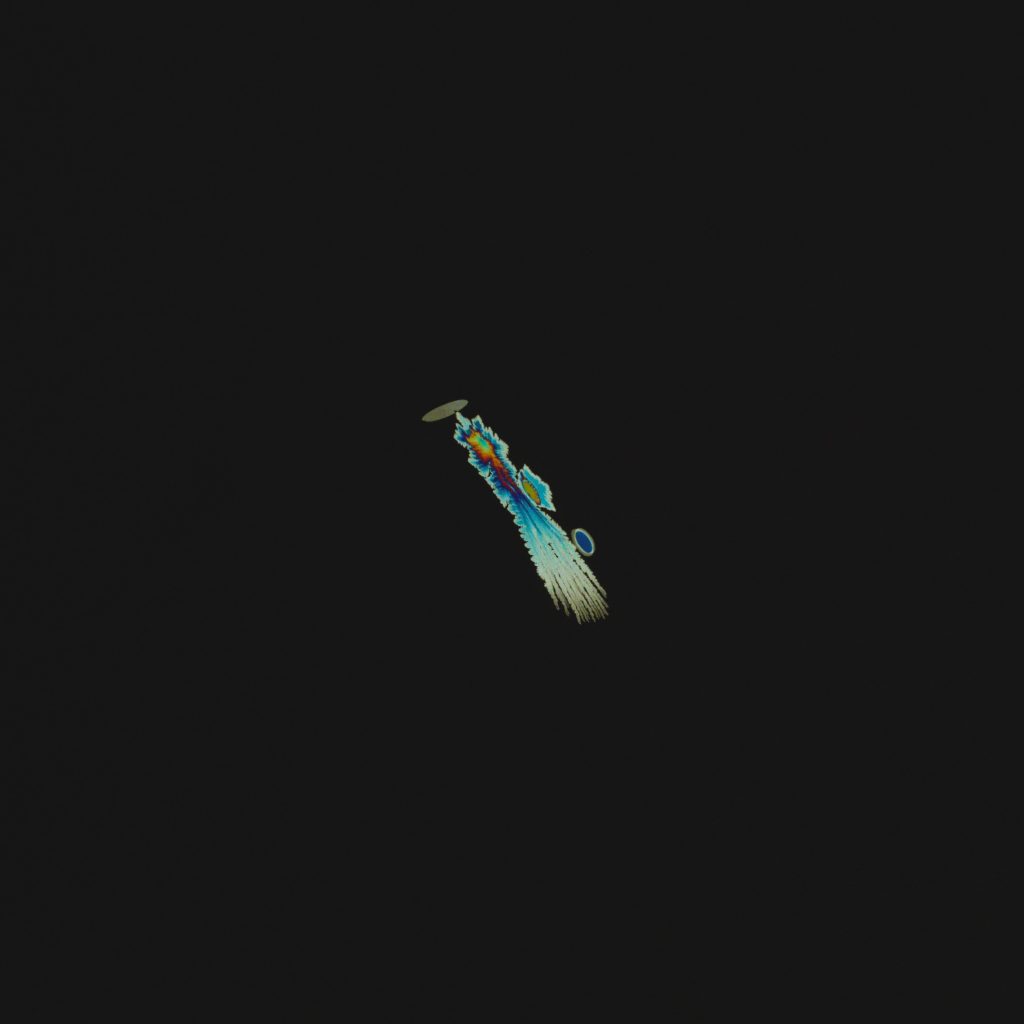Submission 2023
| Submitted by: | Chuankang Pei |
| Department: | Civil and Environmental Engineering |
| Faculty: | Engineering |
Northern rivers begin their freezing process as turbulent water become supercooled (water temperature drops below zero degrees) due to exposure to cold winter air. This results in the formation of suspended frazil ice particles. Colliding with each other, individual ice particles sinter together and form frazil flocs. Frazil ice can cause significant hazards by blocking water intakes in the river or by accumulating to the river bed forming ice jams, but it is also a stunning natural phenomenon. My research focuses on the formation and evolution of frazil ice flocs under changing winter environments in order to better model and predict their physical behavior throughout the river freeze-up process. The image shows a single frazil floc captured in a frazil ice tank during an experiment run at the University of Alberta’s Cold Room Facility. The use of cross-polarization filters submerged in water allows for the visualization of colorful ice particles refracting light. The almost feather-like appearance of this frazil floc suspending in the water is a rare occurrence, as most flocs observed are made up of multiple disk-shaped particles.

